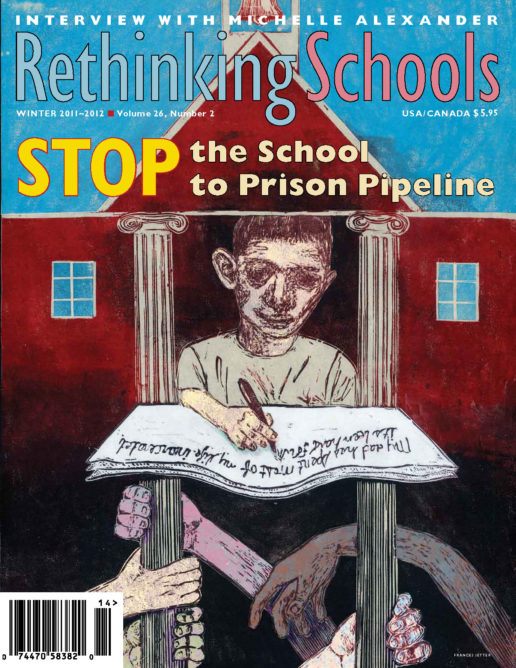Preview of Article:
Plotting Inequalities, Building Resistance
Illustrator: Michael Duffy
Media depictions of San Francisco show idyllic images of fog pouring under the Golden Gate Bridge or happy tourists riding cable cars, but rarely the mostly nonwhite neighborhoods of the east side. San Francisco public schools have a bad track record of mimicking this masquerade, with very low numbers of African American and Latina/o students making it to senior year, and less than a quarter of those who do, graduating with the credits to move on to college. Our high school, the June Jordan School for Equity (JJSE), is located on the east side of the city, and was started by a group of teachers and parents who were disturbed by the high numbers of black and brown youth being underserved and then dropping out. We are an intentionally small school with a focus on social justice.
Our commitment to send students of color to college means that they need a strong math education. As members of the math department, we believe, like Bob Moses, that math literacy in itself is a civil rights issue for students of color. We have seen too many “math haters” end up in remedial classes in college, short-circuiting their career options.
The teachers who helped found our school were mostly from the humanities departments, and it is easier to imagine getting straight to a student’s heart and experiences with a great piece of literature or history told from a non-oppressor perspective than it is to imagine the quadratic formula liberating anyone. Part of our school’s mission is to help our students become agents of social change, so making explicit connections to social issues in math class is something that we tryto do, though many math standards do not make this easy. Still, when the lesson involves important math skills, social justice, and something that will grab student attention, there is the potential that class will be exciting instead of mundane.

